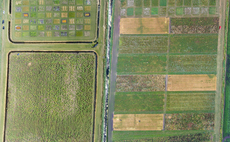
Record-breaking rainfall throughout the autumn and winter months may have put the yield targets of many winter crops in jeopardy. But as early March weather gives a nod - finally - to drier and warmer conditions ahead, now's the time to rebuild plant health and get crops spring ready to secure remaining potential.
Rooting, nutrition, and stress recovery are the key areas to focus on, with biostimulants being key as soon as growers are able to travel, says Stuart Sutherland, technical manager at Interagro.
"While PGRs may be the typical tool of choice early spring to stimulate rooting and tillering, plant biostimulants are a natural chemical-free alternative that can help growers reduce their reliance on synthetic inputs.
"One biostimulant that has been put through its paces over the years and shown it can tick the boxes on these plant health objectives is Interagro's amino acid based biostimulant Bridgeway," he continues.
"Bridgeway promotes healthier crops by stimulating growth, optimising resource use efficiency and crucially, it increases recovery and immunity against stressful growing conditions, something that is becoming increasingly vital to growers, which cannot be achieved through PGR."
Key plant health objectives this spring and how Bridgeway can help
1. Repair and optimise rooting
"An effective biostimulant will stimulate significant root growth which will be vital not only for anchorage as plants get taller, but also achieving an expansive and robust network of roots that can scavenge for essential water and nutrients as the season develops," notes Stuart.
"At some point during the season we will likely have a drought period and crops will need to be fit and self-sufficient to find the resources they need deep in the soil profile."
Rooting research at Nottingham University has shown Bridgeway to be one of the strongest stimulants of its type, increasing root mass by an average of 52% over nine separate studies.
"What's more, the trials revealed that Bridgeway helps plants develop significantly bigger root systems when the resources they need are in short supply," explains Stuart.
The work looked at the effect of Bridgeway on plants when nutrients were withdrawn, water was reduced, and plants were subjected to heat stress. Plants treated with Bridgeway grew significantly bigger root systems (up to +49%) than untreated plants subjected to the same stresses, which also led to significantly bigger plants - up to 27% more shoot mass.
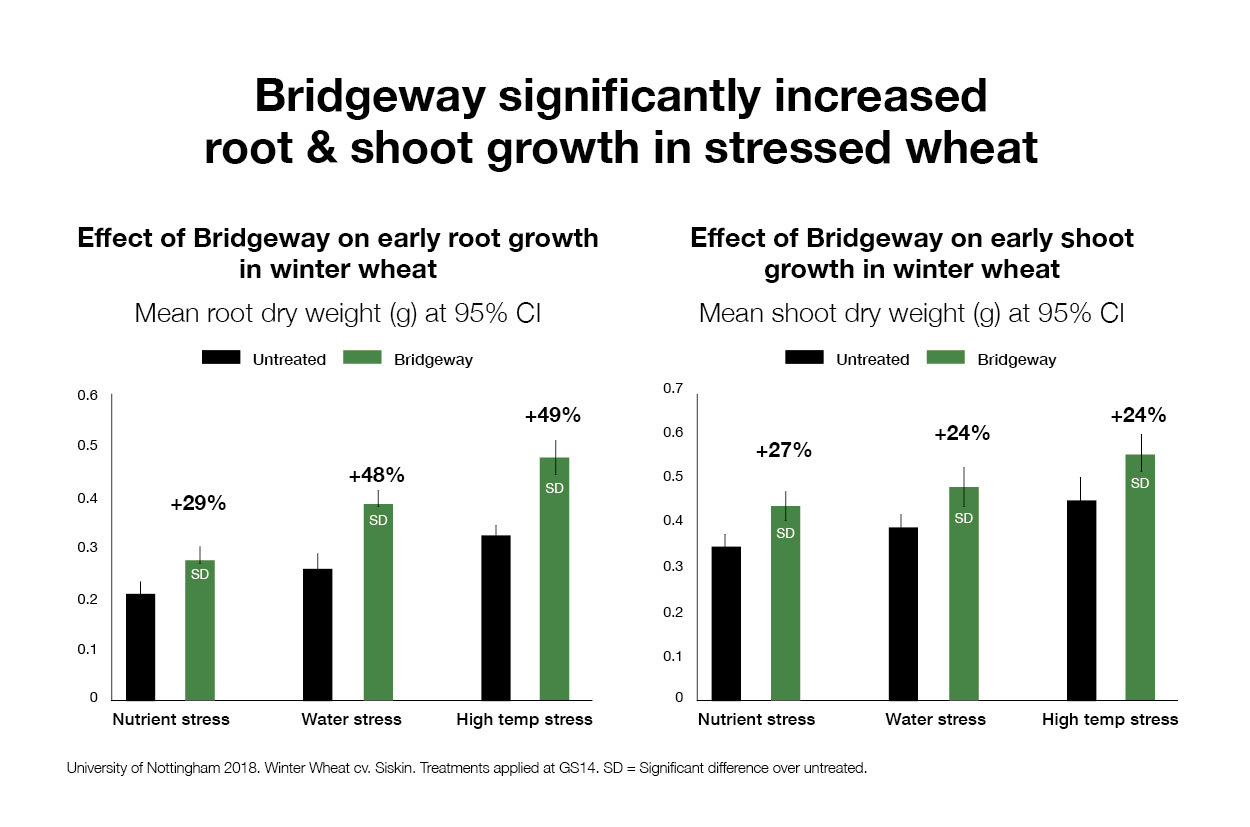
"Crucially for growers, it means applying Bridgeway to plants early in the growing season will help create more resourceful deep-rooted plants -better able to scavenge when moisture and nutrients are in short supply - to feed the growing plant," says Stuart. "With increasingly hot and dry conditions now becoming the norm, it can be a real game-changer for growers.
"On farm this has translated into higher macro and micronutrient uptake and improved resilience. It's also a way to help reduce reliance on synthetic fertiliser inputs."
2. Feed and enhance nutrient use efficiency
Alongside nutrition to give crops a much-needed nutrient boost, a biostimulant can help make the uptake of that nutrition more effective and increase its use efficiency inside plants. Typically plants are able to access just 60% of the applied nutrition, so as well as improving access to it, you want to be making what nutrition is taken up, used more efficiently inside the plant.
Studies at the university conducted in 2022 showed that reducing nitrogen beyond 60% can reduce root and shoot growth but Bridgeway helps plants compensate.
"Wheat plants at growth stage 12-14 were fertilised with varying levels of nitrogen, 100% N being equivalent to 80kg/ha," explains Stuart. "At 60% and even at 30% N, Bridgeway treated plants had 45% more roots and over 30% more shoots, compared with control plants at 100% N. They also had up to 18% more nitrogen in their leaves and chlorophyll levels were increased significantly at all N rates.
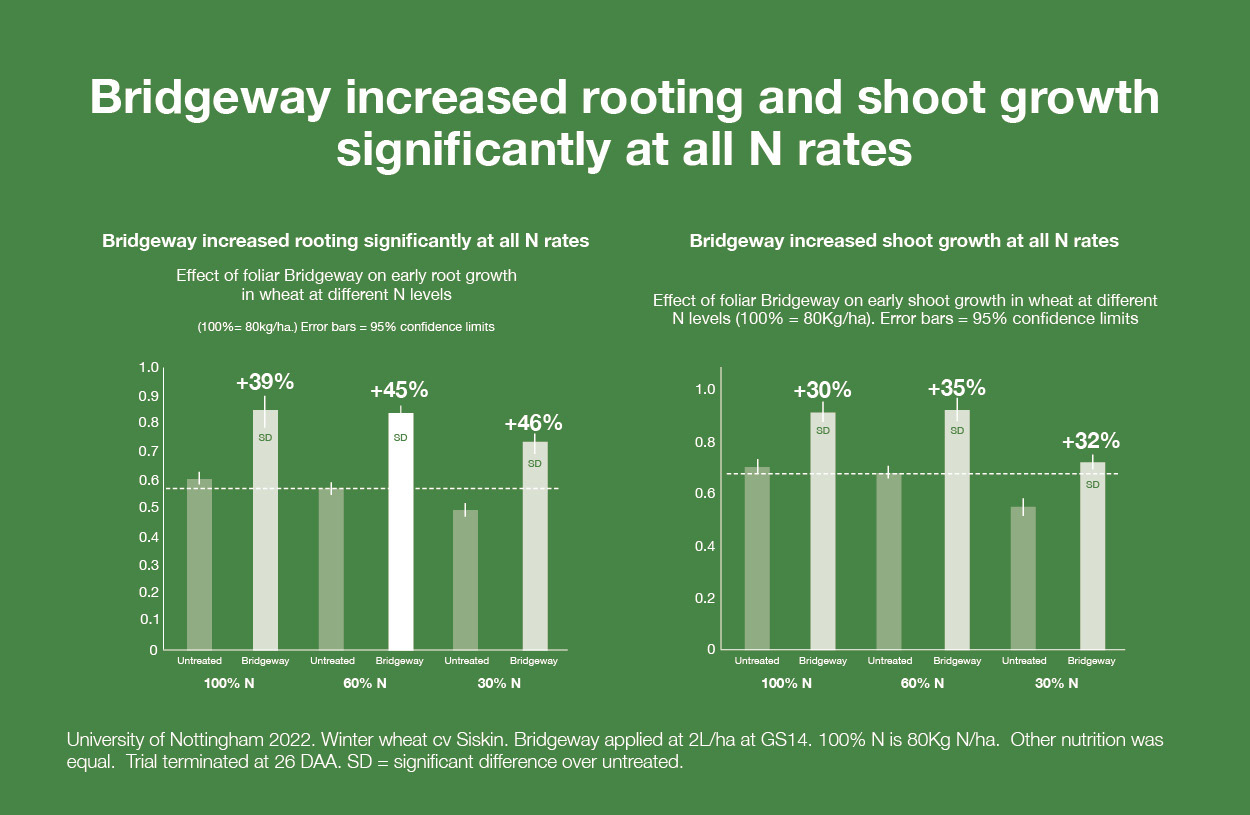
"In the field, independent replicated trials at Barworth Research Ltd showed Bridgeway increased yield by 0.76 t/ha at 100% N and 0.46 t/ha at 50% N. At the 50% N rate Bridgeway actually brought the yield closer to the untreated 100% N rate."
3. Stress recovery and resilience
Recovering stressed winter crops that have had to rely on their own depleted resources over winter is key to get crops fit for the energy and amino acid demands of the spring growing season.
Warmer weather will push crops through growth stages to reach the reproductive phase of growth for survival. It's early March and we are already seeing some winter oilseed rape in flower for example, says Stuart.
"The key now is to get plant health back on track so crops are fighting fit when weeds will be competing for moisture, nutrition and sunlight, and opportunistic diseases such as yellow rust and septoria will be lurking for vulnerable crops.
"This is where Bridgeway comes into its own. Containing all the amino acids plants need - at food grade quality - Bridgeway provides the immediate stress-busting amino-acid remedy that plants can use instantly to repair. One of those amino acids is proline for example, which Bridgeway contains in high concentration.
"Without amino acids plants would need to rely on breaking down nitrogen fertiliser to get the amino acids they need. One this takes time, two it takes a lot of energy to do it, three it depletes nitrogen that the crop could put to be better use, and finally your nitrogen inputs are way more expensive than biostimulant."
Putting the vigorous rooting benefits of Bridgeway to one side, it's the extraordinary stress recovery and resilience benefits - seen in trials and on farm - that make Bridgeway stand out, says Stuart.
"If we're thinking about prevention in wheat, T0 is a key time to start supporting your plant's own defence system. It really is best to go early to prime plants, which we've seen confirmed in trials and its coming through more and more."
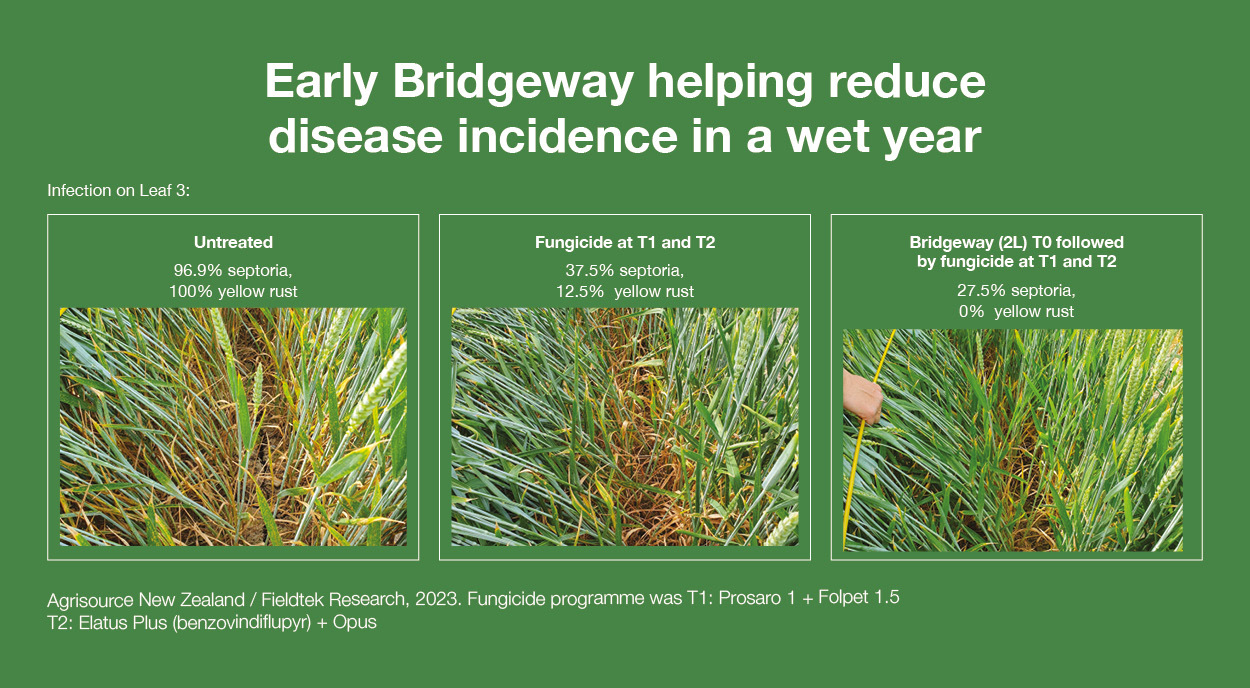
In this wheat trial in New Zealand in 2023, applying Bridgeway at T0 reduced septoria incidence by 10%, compared with a T1 plus T2 fungicide programme, and reduced yellow rust levels by 12.5%, resulting in a healthier crop - as the pictures show.
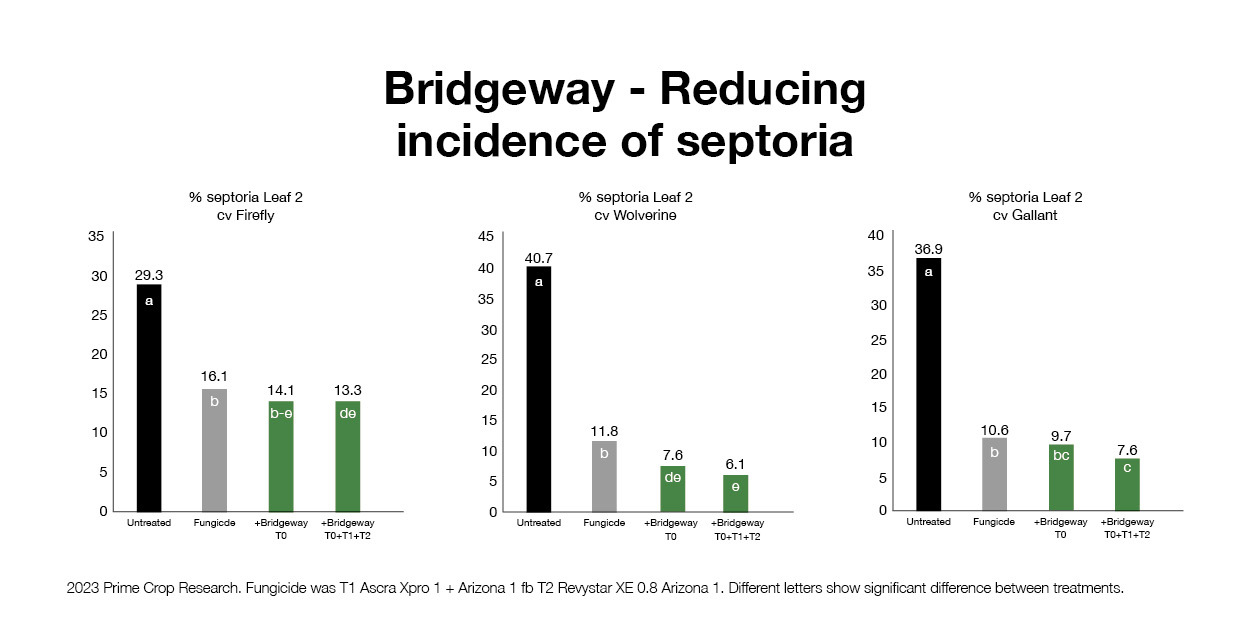
In Prime Crop Research trials in 2023, Bridgeway at T0 reduced septoria incidence significantly on some leaf layers in the trials which were conducted on varieties Firefly, Wolverine and Gallant, and showed significant reduction in septoria incidence on leaves two and three in Kerrin 2022 trials.
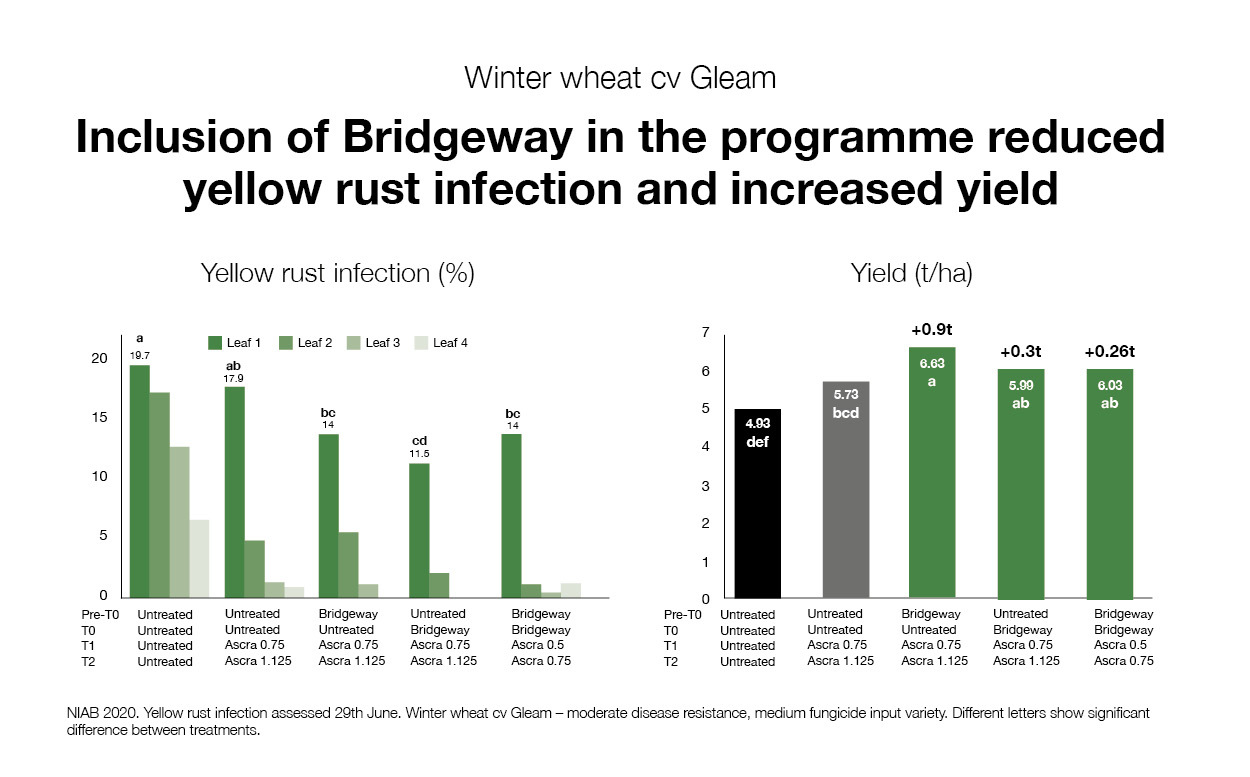
This follows on from research conducted at NIAB in 2020 where Bridgeway either pre-T0 or at T0, ahead of Ascra Xpro (bixafen + fluopyram + prothioconazole) at T1 and T2, reduced disease levels and increased yields. In the Gleam Bridgeway increased yield by over 0.3 t/ha. In the Gravity the benefit was over 1 t/ha.
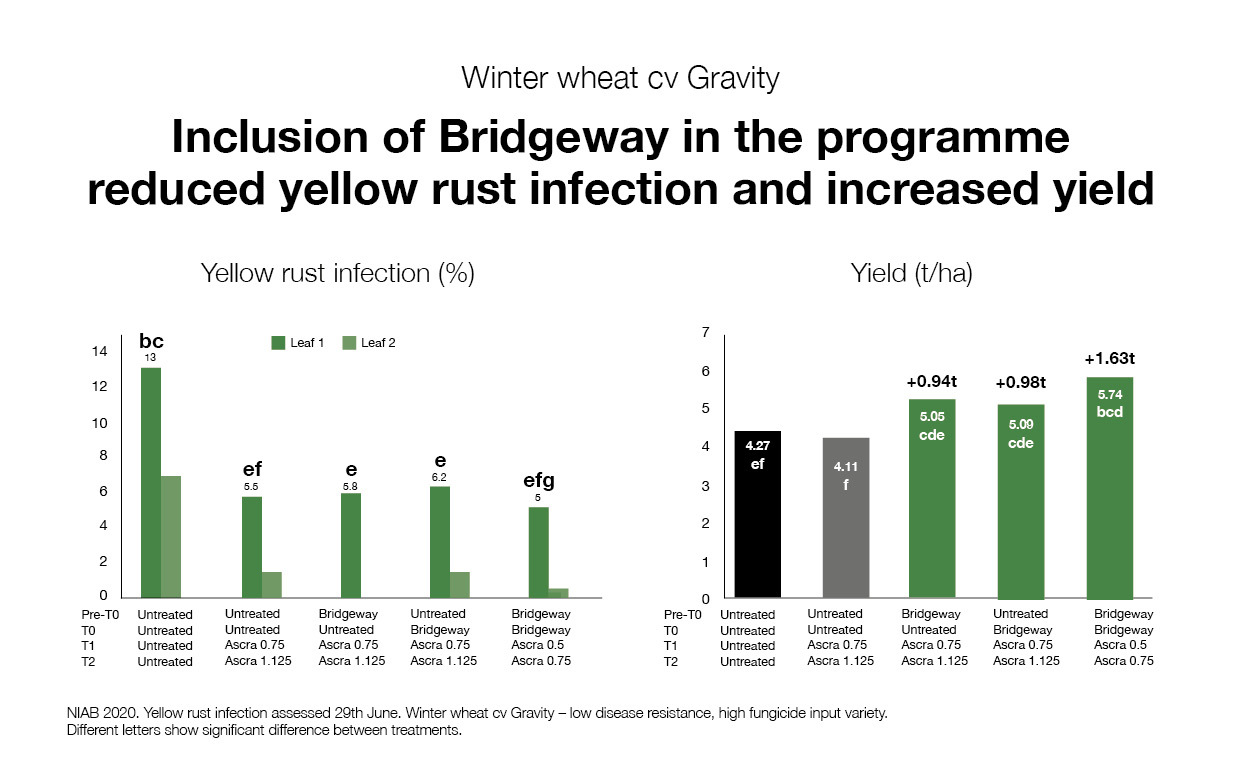
So how does all of this impact yield?
"If crops are taking up more nutrients, fighting off disease better and are able to keep going even during stress periods, then the natural result is going to be better yields," says Stuart.
"But you have to time applications to what you are trying to achieve for best results and where the risk factors are.
"While biostimulants are by no means a silver bullet, products like Bridgeway are a proven, scientifically backed, small investment which could result in potentially huge returns."
This content is sponsored by InterAgro
For more information on Bridgeway visit www.interagro.co.uk or for technical support, call Stuart on 07384 460352.










